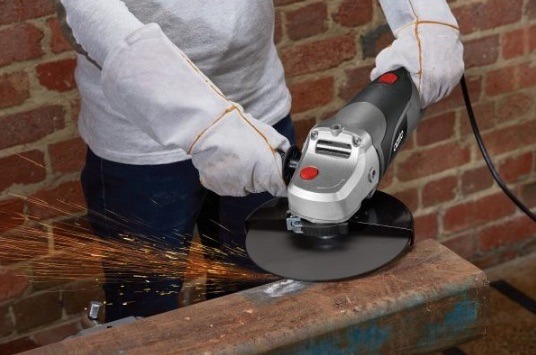HOW TO CHOOSE AN ANGLE GRINDER
HOW TO CHOOSE AN ANGLE GRINDER
The angle grinder is such a versatile tool. It can be used for a variety of jobs and comes in a range of shapes, sizes and weights. If you’re looking for the right tool to meet your needs, we’ve got some handy information to help you pick a grinder that will set sparks flying.

THE ANGLE GRINDER BASICS
An angle grinder’s primary use, funnily enough, is to grind down metal to create a smooth, seamless finish. It’s a versatile tool that allows you to shape any surface exactly as you’d like.
Angle grinders can also be used for cutting metal, or even some stone or bricks with the right disc. Once you’re done, the angle grinder can also be used to buff up and add a shiny finish using a polishing disc.
If you’re careful, an angle grinder can even be used to sand wood. But beware! Angle grinders can make a meal of wood pretty quickly!
WHAT TO LOOK FOR
LOAD SPEED
This refers to how quickly the disc is capable of moving. A slower load speed will run more quietly but less powerfully. The more heavy duty your job, the higher load speed you want.
SOFT START
Angle Grinders with ‘soft start’ reduce the kick, making them easier to handle; this is very handy for jobs that are likely to have a bit of resistance.
VOLTAGE
Much like your load speed, the higher the voltage, the more power you’ve got. Often corded angle grinders have a higher voltage, but if that’s not needed, a cordless grinder is pretty handy.
DISC SIZE
Larger discs are better for larger surfaces and deeper cuts. For more precise jobs or curved finishes a smaller disc will be more suitable. When buying new discs make sure to check that the arbour diameter of the disc matches that of your grinder.
SPEEDS
Burnishing metals and sanding wood will only require a low speed, something around 2000 rpm. For cutting through harder materials, around 5000-7000 rpm is required.
SAFETY
When using any power tool safety it’s always a priority make sure you follow these steps:
- Always use the safety guard in the proper position
- Always use side handle for stability
- Always wear gloves and safety glasses
- Never have the grinder attached to power when changing the disc
- Run new wheels for a minute when first attached incase wheel is defective
That’s the basics. Now that you’ve got the info to pick your tool it’s time to get stuck into the grind.

